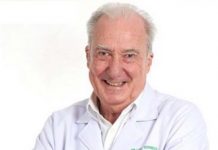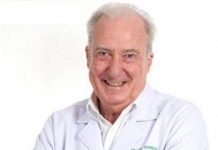My friend and colleague Dr. William sent me some interesting ‘news’ the other day. It has been shown quite categorically that if you want the audience to pay attention to an article, just put the word “cancer” into the headline. It works! My heading this week does have the dreaded C word, and you are reading it! The powers of persuasion or the like.
About one year ago I wrote on the so-called connection between drinking coffee and miscarriages. This was the findings from examination of the records of over 1,000 women in San Francisco. Dr Li and colleagues’ study involved 1,063 pregnant women who were members of the Kaiser Permanente health plan in San Francisco from October 1996 through October 1998. Women in the group never changed their caffeine consumption during pregnancy.
What they found was women who consumed the equivalent of two or more cups of regular coffee or five 340 ml cans of caffeinated soft drink – were twice as likely to miscarry as pregnant women who avoided caffeine.
However, two days after the shock-horror miscarriage item hit the world media, there was another report. Researchers now claimed that the much-demonized substance may actually fight cancer.
In this study of more than 80,000 women, US and Australian experts found foods containing caffeine – such as coffee, tea, cola and chocolate – may reduce the risk of ovarian cancer, the sixth-most common cause of cancer deaths among Australian women.
According to Assistant Professor Shelley Tworoger of Harvard University in Boston and her colleagues – including medical epidemiologist Associate Professor Dorota Gertig of the University of Melbourne and Victorian Cytology Service – caffeine was beneficial, but decaffeinated coffee showed no health benefit at all.
For reasons they cannot yet explain, the group also found the beneficial effect of caffeine was strongest for women who had never used oral contraceptives or postmenopausal replacement hormone therapy.
The researchers analyzed data from the Nurses’ Health Study, an ongoing assessment of the well-being of 212,701 female registered nurses that began in 1976 when the nurses were aged 30-35.
Every two years, researchers at Boston’s Brigham and Women’s Hospital checked up on the surviving women. After studying the nurses’ history, Professor Tworoger and Professor Gertig’s group expanded the parameters and found only a very small association between smoking and mucinous tumours, a rare form of ovarian cancer. They also found no connection between alcohol consumption and ovarian cancer.
Oncologist Ian Olver, head of the Cancer Council Australia, said it appeared that coffee and chocolate couldn’t hurt and might even help.
One very bright physician called Paracelsus wrote in 1564, “Dosage alone determines poisoning.” For example, an oral dose of 400 milligrams of ordinary table salt per kilogram of body weight can make a person violently ill. Every year about 60 people die from aspirin overdose – a substance you can buy over the counter. However, it is the dosage that determines the poison effect.
Take all this a little further and look at the concept of ‘toxicity’ and ‘hazard’ to health. People have accepted ‘health hazards’ into the everyday vernacular, and equate ‘hazard’ and ‘toxicity’.
Toxicity and hazard are not the same thing. “Toxicity” is the potency under experimental conditions, whereas “hazard” is the risk of poisoning when a product is used. Hazard thus includes both toxicity and the chance of exposure to a toxic amount of a product, remembering at all times that “Dosage alone determines poisoning.”
I was asked fairly recently about bathroom cleaners and toxicity, and there is no getting away from the fact that the bathroom/toilet cleaners are highly toxic, but the hazard factor is less, as we don’t accidentally swallow these liquids. However, always store them where small children cannot get at them!
Returning to Professor Olver, when asked about the caffeine ‘hazard’ he said, “It’s well worth looking into further.” Hmm, yes. Looking into anything further requires research salaries and equipment that costs money, and where does it come from? Make the biggest claims with the greatest amount of shock-horror and funding will be forthcoming. The chocolate manufacturers will jump on this like blowflies on a dead dog.
Now I must go and have my morning latte.




